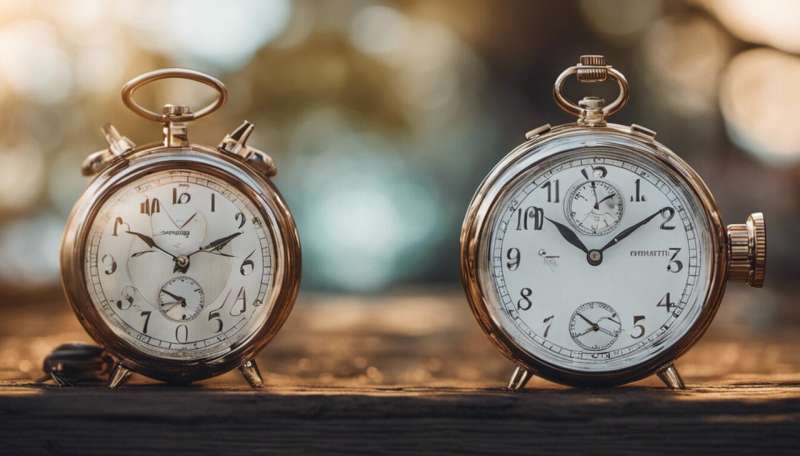As the US pushes to make daylight saving permanent, should Australia move in the same direction?

Sunday will mark the end of the Daylight Saving Time (DST) in eastern Australia, but there are many who would like to see it last longer or permanently.
Twice a year, New South Wales, Victoria, Australian Capital Territory, Tasmania and South Australia make this shift. Queensland, Western Australia and the Northern Territory do not change times. In those states the issue has been hotly debated for years. But what would be the benefit of making time permanent, and is it feasible?
In the United States, the push to fix time has gathered pace, with a bipartisan bill reintroduced to the House this month. The Sunshine Protection Act is set to bring uniformity in fixing the time, starting from November 2023. If enacted, it means daylight saving would be permanent across the US.
The bill passed the Senate in March 2022. It was received at the House, but Americans are split on whether they prefer permanent daylight saving time or permanent standard time—the bill then expired and so had to be reintroduced.
The proponents argue the biannual ritual of switching time is a health hazard leading to insomnia, decline in mental health, increased risk of hospitalizations and accidents. The solution, they argue, is to restore permanent, year-round standard time.
Would fixing time permanently have benefits in Australia?
Why the US is considering fixing permanent time
One of the US policy’s goals is to reduce energy consumption. However, according to the latest research, contrary to the policy’s intent,daylight saving caused increased electricity demand in the US. Research has also found it does not conserve electricity in Australia.
Overwhelmingly, recent research opposes the current situation of changing the clocks twice year. In particular, the loss of one hour of sleep in spring has been linked to an increase in heart attacks, strokes, road accidents and negative mood.
Moreover, with mobile phones available in offices and bedrooms, the shift to daylight saving was shown to result in a dramatic increase in “cyberloafing.”
On the Monday following the switch, employees sustain more workplace injuries and injuries of greater severity, according an analysis of data from the US Department of Labor and Mine Safety and Health Administration between 1983–2006, although there is a decrease in injuries when employees are gaining one hour of sleep.
In a study of Australian suicide data from 1971 to 2001, researchers found a rise in male suicide rates in the weeks following the commencement of daylight saving, concluding the shifts could be destabilizing for vulnerable people.
The health evidence is, in fact, contrary to idea behind the current legislation and instead suggests a permanent switch to standard time may offer the maximum health and public safety benefits.
Florida Senator Marco Rubio, who is strongly supporting the bill, told the Senate: “There’s some strong science behind it that is now showing and making people aware of the harm that clock-switching has. I know this is not the most important issue confronting America, but it’s one of those issues where there’s a lot of agreement. If we can get this passed, we don’t have to do this stupidity anymore. Pardon the pun, but this is an idea whose time has come.”
Australian legislation—move to uniformity
Standard time legislation dates back to 1890s. That is when jurisdictions enacted uniform legislation related to standard Greenwich Mean Time. For example, Tasmania fixed the time of the 150th meridian of longitude east of Greenwich and Western Australia declared the mean time of the 120th meridian as the standard time. At that stage, the legislation was consistent. This continued until the daylight saving debate commenced.
Daylight saving was first considered at the Premiers’ Conference in May 1915. During the first and second world wars, national daylight time operated in Australia. Tasmania and Victoria introduced daylight saving in 1916. In Tasmania, the act was repealed by the Daylight-Saving Repeal Act 1917 (Tas). In 1967, Tasmania again introduced daylight savings.

By 1990, the jurisdictions were changing the dates on which to introduce daylight savings, and their positions were not uniform.
Liberal Senator Paul Calvert described the “maze of different times” as a “shackle on the economy, as well as causing interruptions to work and family balance.”
Then-prime minister John Howard stated: “I think it’s a great pity that we have this month when Tasmania and NSW and Victoria are on different time zones.”
Starting from September 1 2005, all jurisdictions adopted the Coordinated Universal Time (UTC) standard. Following long deliberations, in April 2007 they agreed on a uniform start and end date.
Queensland, WA and the NT have fixed permanent time.
South Australia became an international anomaly by having 30 minutes difference, rather than full hour, to achieve a compromise between strong advocacy groups within the jurisdiction.
One of the arguments against fixing is geographical location. Tasmania has more drastic variation in sun activity compared to Northern Territory. The scientific solution would be to fix the time but reassign the regions to the actual sun-clock based time zones.
Where does all this leave us? While daylight saving is not the most pressing problem facing Australia today, it may be that soon enough, the scientific evidence and practical convenience of fixing time might be preferred to biannual shifts.
This article is republished from The Conversation under a Creative Commons license. Read the original article.![]()
Citation:
As the US pushes to make daylight saving permanent, should Australia move in the same direction? (2023, March 31)
retrieved 31 March 2023
from https://phys.org/news/2023-03-daylight-permanent-australia.html
This document is subject to copyright. Apart from any fair dealing for the purpose of private study or research, no
part may be reproduced without the written permission. The content is provided for information purposes only.
For all the latest Science News Click Here
For the latest news and updates, follow us on Google News.

